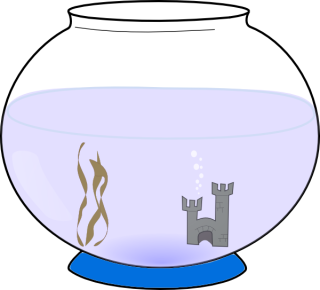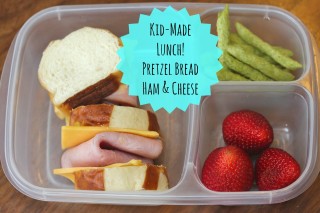
 As the first term of school starts, I would like to talk about homework. I can hear the collective groan of dread from all children and parents everywhere. Homework is not liked by many. The main reason for this may be that it is too hard. Something is taught at school, which a student may not fully understand, then they are required to do extra work on it at home by themselves. The teaching then falls on the shoulders of parents. Understandably, you may not know how to help. Even if you do, most, if not all children, do not want to listen to their parents teaching them at home.
As the first term of school starts, I would like to talk about homework. I can hear the collective groan of dread from all children and parents everywhere. Homework is not liked by many. The main reason for this may be that it is too hard. Something is taught at school, which a student may not fully understand, then they are required to do extra work on it at home by themselves. The teaching then falls on the shoulders of parents. Understandably, you may not know how to help. Even if you do, most, if not all children, do not want to listen to their parents teaching them at home.
So, how can we help change this situation?
Yes, one solution is to send them to us, but Kip McGrath is not a place for children to do their homework. To catch them back up to their classmates we need to focus mainly on filling their knowledge gaps. However, if the homework is on one concept, for example division, we can teach them how to do a few and they can finish the rest at home.
If homework is consistently too hard, I would definitely speak to your child’s teacher and discuss a solution. Fighting over homework is no good for anyone. It will only be beneficial to do, if the homework is something the child understands.
Creating a homework routine may also help. Pick the time and the place that works best for your family and agree on this together. Make the sessions short (10-15 minutes) and reward your child with something they enjoy when they have finished. Depending on your child’s age, there may need to be a number of these sessions to complete their homework. The best learning happens if you remember the motto: “Do a little, often”.
Teachers Tips : Memorising Facts

A good way to memorise a fact is to make up a fun saying. For example,
to remember that the word ‘mean’ is the same as finding the average of
scores, we teach this saying: ‘Mean people are very average.’
Monthly Joke : The Goldfish

Little eight–year–old Nancy was in the garden filling in a hole when her neighbour peered over the fence.
Interested in what the cheeky–faced youngster was doing, he asked, “What are you doing there, Nancy?“
“My goldfish died,“ Nancy sobbed, “and I‘ve just buried him.“
The obnoxious neighbour laughed and said condescendingly, “That‘s a really big hole for a little Goldfish, don‘t you think?“
Nancy patted down the last heap of earth with her shovel and replied, “That‘s because he‘s inside your cat.“
Make Rules that Work for Your Family
 Children need limits and boundaries. Although they might complain, rules provide a sense of security that helps them learn what to expect from others and how to behave. Follow these guidelines to set effective rules with your family:
Children need limits and boundaries. Although they might complain, rules provide a sense of security that helps them learn what to expect from others and how to behave. Follow these guidelines to set effective rules with your family:
Keep rules clear and simple. Don‘t overwhelm kids with long lists of prohibited behavior. Keep just a few reasonable ones, and state them in clear language. For example,“We turn the TV off at 8 p.m.
Set a routine. Create a written daily schedule that sets times for homework, TV, school, playtime, baths, and meals. A definite schedule decreases the potential for arguments and the need to nag.
Praise often. Don‘t wait for a child to violate a rule or misbehave before you give him or her your attention. When you see children doing something right, make sure you praise them promptly to reinforce positive behavior.
State directions clearly. If the time comes for homework, don‘t hint: “Don‘t you have homework to do?“ Instead, say: “It‘s time for you to do your homework.‘‘
Concentrate on priorities. Focus on one or two specific behaviors at a time, not a lengthy list that no one can remember. You‘ll be more consistent, and you child will learn more quickly and readily.
Word Brain Teaser

To help you get started the 4th one is “Broken Heart“
Student of the Month
 “Since starting at Kip McGrath, I have watched Steven‘s confidence grow, not only in his maths but across all subjects at school. He has become more diligent in all his work and is a lot happier now that he is achieving his true potential. He not only topped his class but has advanced a level moving into year 11 next year. Many thanks for all your help and efforts in achieving this Christine and staff.“
“Since starting at Kip McGrath, I have watched Steven‘s confidence grow, not only in his maths but across all subjects at school. He has become more diligent in all his work and is a lot happier now that he is achieving his true potential. He not only topped his class but has advanced a level moving into year 11 next year. Many thanks for all your help and efforts in achieving this Christine and staff.“
Regards, Paul – Steven‘s Dad
Steven– Award for Outstanding Improvement in Maths
Child-made School Lunch
 • Pretzel bread or french roll
• Pretzel bread or french roll
• Ham
• Sliced Cheddar
• Mustard (or mayo or butter or
whatever your kids spread
preference is)
1. Let your kids use a table knife that is slightly serrated
to cut the bread into mini slices. Kids love mini’s.
2. Squirt on some mustard and spread around. If you get
too much mustard on one side, just take another slice
of bread and dab it off. Your kids will like this.
3. Place on some cheese, fold the ham, more cheese,
and top with bread. Done. Awesome.

